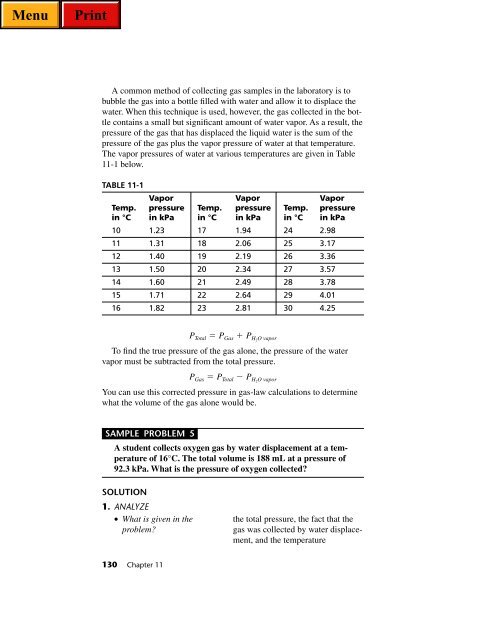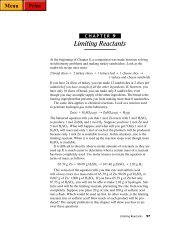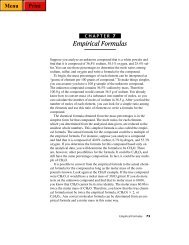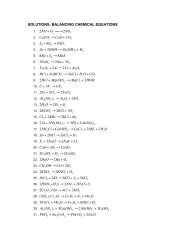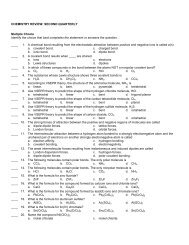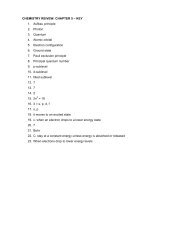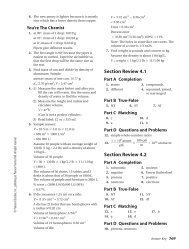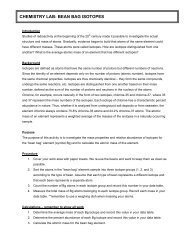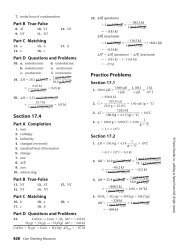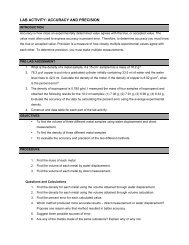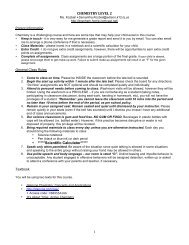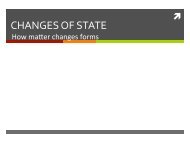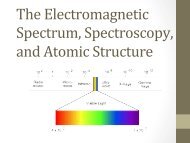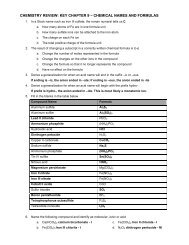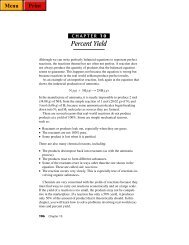Gas Laws
Gas Laws
Gas Laws
Create successful ePaper yourself
Turn your PDF publications into a flip-book with our unique Google optimized e-Paper software.
A common method of collecting gas samples in the laboratory is to<br />
bubble the gas into a bottle filled with water and allow it to displace the<br />
water. When this technique is used, however, the gas collected in the bottle<br />
contains a small but significant amount of water vapor. As a result, the<br />
pressure of the gas that has displaced the liquid water is the sum of the<br />
pressure of the gas plus the vapor pressure of water at that temperature.<br />
The vapor pressures of water at various temperatures are given in Table<br />
11-1 below.<br />
TABLE 11-1<br />
Vapor Vapor Vapor<br />
Temp. pressure Temp. pressure Temp. pressure<br />
in °C in kPa in °C in kPa in °C in kPa<br />
10 1.23 17 1.94 24 2.98<br />
11 1.31 18 2.06 25 3.17<br />
12 1.40 19 2.19 26 3.36<br />
13 1.50 20 2.34 27 3.57<br />
14 1.60 21 2.49 28 3.78<br />
15 1.71 22 2.64 29 4.01<br />
16 1.82 23 2.81 30 4.25<br />
130 Chapter 11<br />
P Total P <strong>Gas</strong> P vapor<br />
H 2O<br />
To find the true pressure of the gas alone, the pressure of the water<br />
vapor must be subtracted from the total pressure.<br />
P<strong>Gas</strong> PTotal P vapor<br />
You can use this corrected pressure in gas-law calculations to determine<br />
what the volume of the gas alone would be.<br />
SAMPLE PROBLEM 5<br />
A student collects oxygen gas by water displacement at a temperature<br />
of 16°C. The total volume is 188 mL at a pressure of<br />
92.3 kPa. What is the pressure of oxygen collected?<br />
SOLUTION<br />
1. ANALYZE<br />
• What is given in the the total pressure, the fact that the<br />
problem? gas was collected by water displacement,<br />
and the temperature<br />
H 2O


